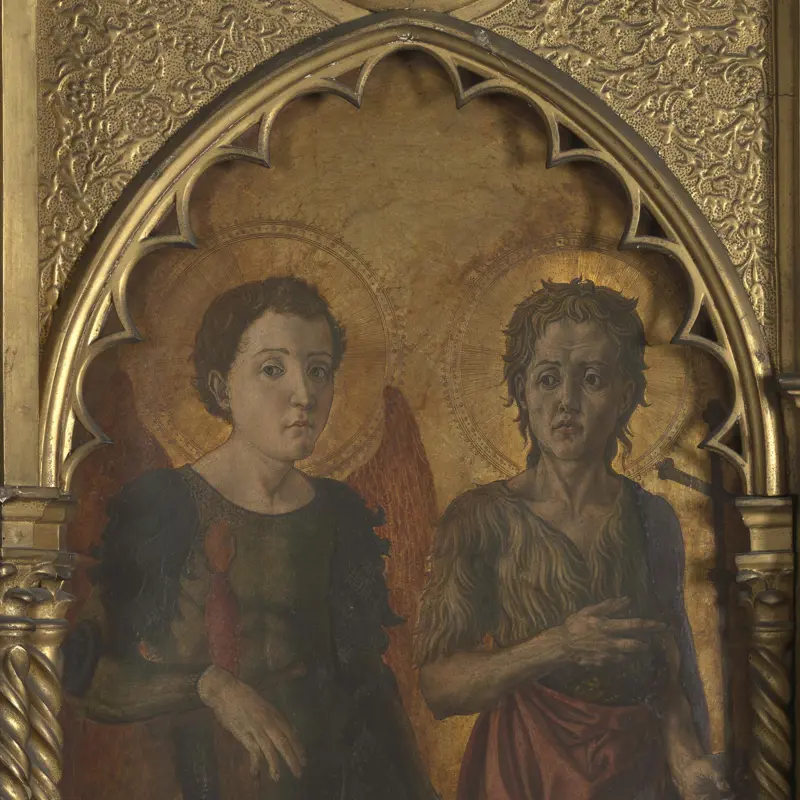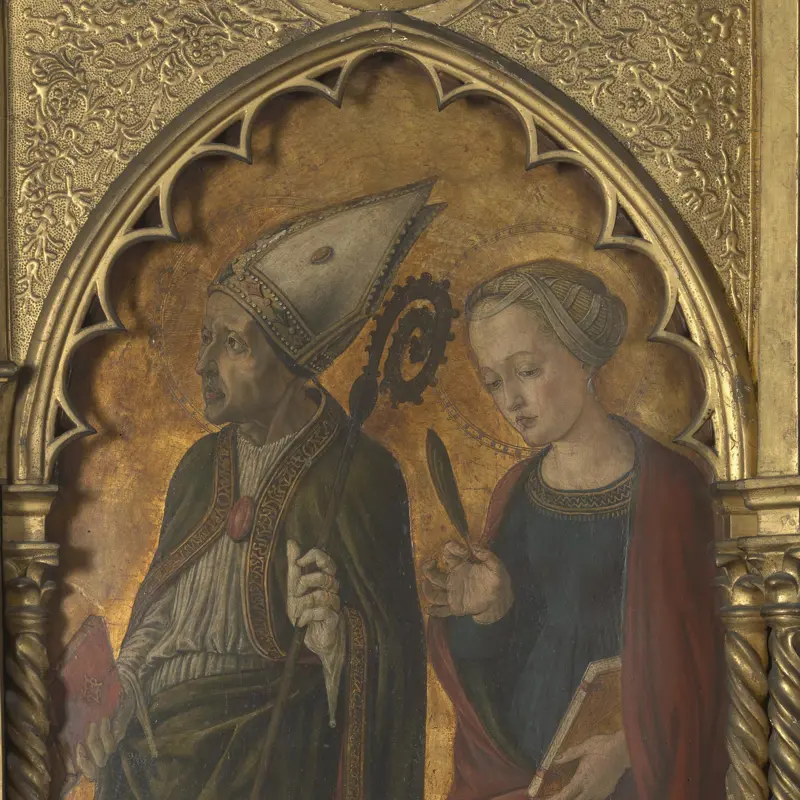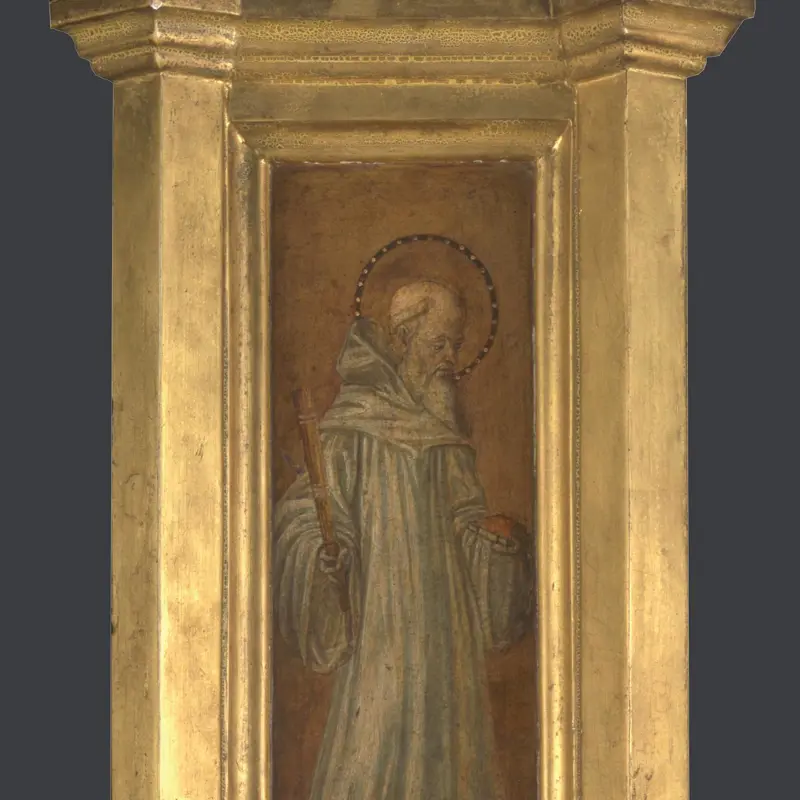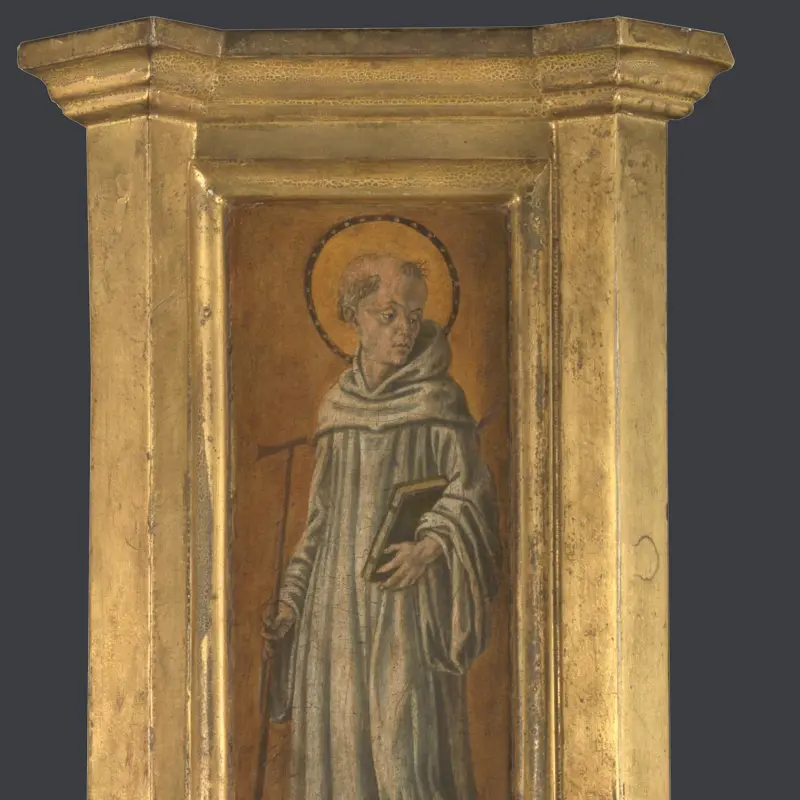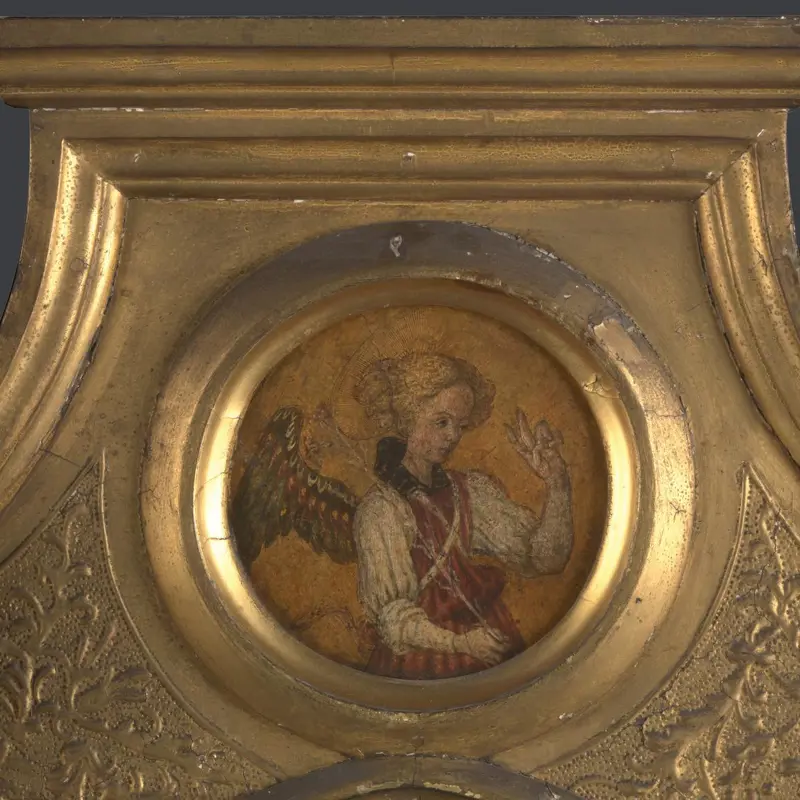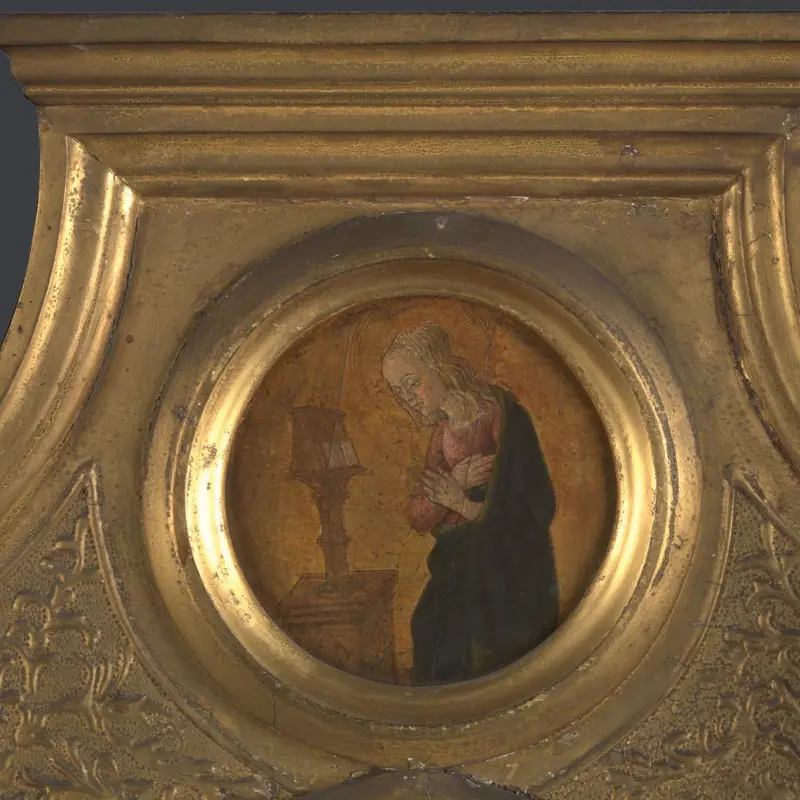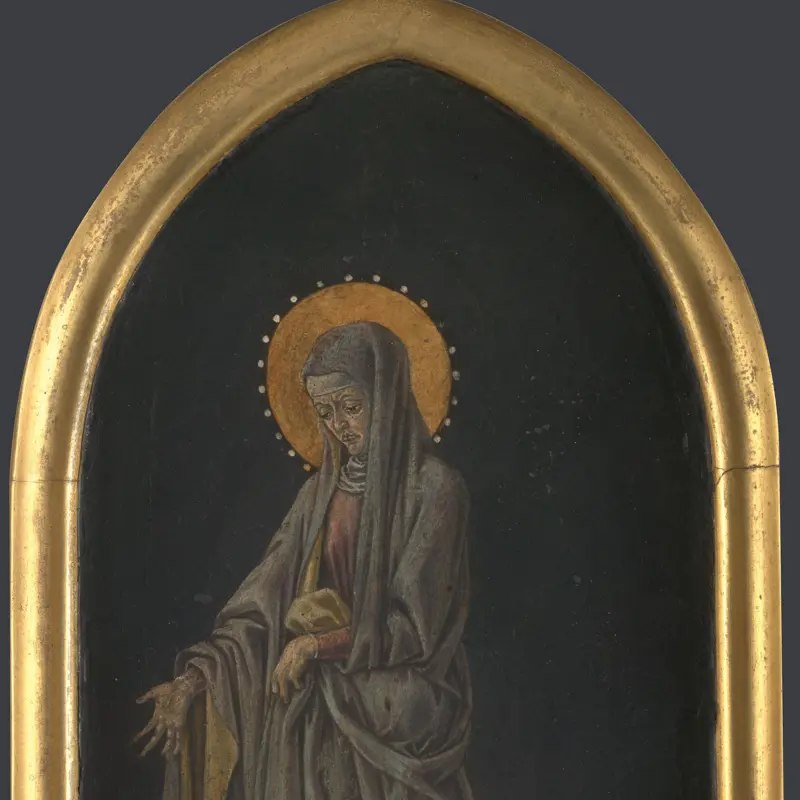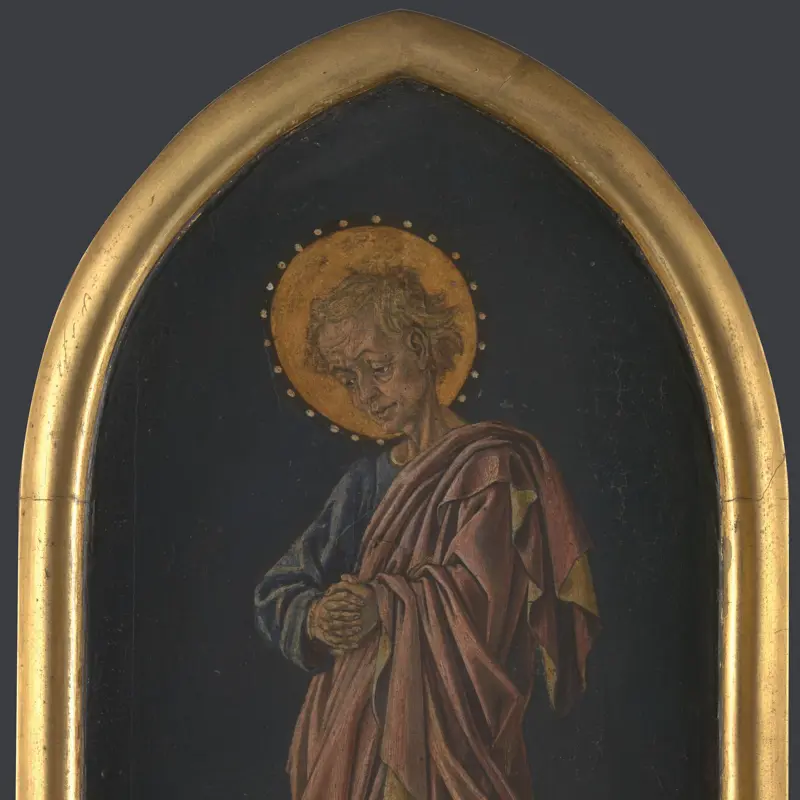Probably by Jacopo di Antonio (Master of Pratovecchio?), 'A Bishop (Donatus?) and a Female Martyr (Antilla?)', about 1450?
About the work
Overview
A rather anxious-looking bishop holding a book and a crosier (bishop’s staff) gazes to his right, while behind him a demure female saint looks at the floor. These are probably Saint Donatus, first bishop of Arezzo in Tuscany, and Saint Antilla, patron of Montepulciano, whose remains were venerated in Arezzo.
They come from a polyptych (a multi-panelled altarpiece) painted in about 1450 for the church of San Giovanni Evangelista in Pratovecchio, Tuscany. Other parts are also in our collection. The saints included would have been ones important to the patrons and ones with links to the place for which the altar was intended. The nunnery of San Giovanni had close links with Arezzo, about 46 km to the south of Pratovecchio, where there was a sister house, San Benedetto. Nuns were allowed to come and go between the two houses.
Key facts
Details
- Full title
- A Bishop (Donatus?) and a Female Martyr (Antilla?): Main Tier Right Panel
- Artist
- Probably by Jacopo di Antonio (Master of Pratovecchio?)
- Artist dates
- 1427 - 1454
- Part of the group
- Pratovecchio Altarpiece
- Date made
- About 1450?
- Medium and support
- Egg tempera on wood (probably poplar)
- Dimensions
- 94 × 49.5 cm
- Acquisition credit
- Bought, 1857
- Inventory number
- NG584.2
- Location
- Not on display
- Collection
- Main Collection
Provenance
Additional information
Text extracted from the ‘Provenance’ section of the catalogue entry in Dillian Gordon, ‘National Gallery Catalogues: The Fifteenth Century Italian Paintings’, vol. 1, London 2003; for further information, see the full catalogue entry.
Bibliography
-
1951Davies, Martin, National Gallery Catalogues: The Earlier Italian Schools, London 1951
-
1986Davies, Martin, National Gallery Catalogues: The Earlier Italian Schools, revised edn, London 1986
-
2001
C. Baker and T. Henry, The National Gallery: Complete Illustrated Catalogue, London 2001
-
2003Gordon, Dillian, National Gallery Catalogues: The Fifteenth Century Italian Paintings, 1, London 2003
About this record
If you know more about this work or have spotted an error, please contact us. Please note that exhibition histories are listed from 2009 onwards. Bibliographies may not be complete; more comprehensive information is available in the National Gallery Library.
Images
About the group: Pratovecchio Altarpiece
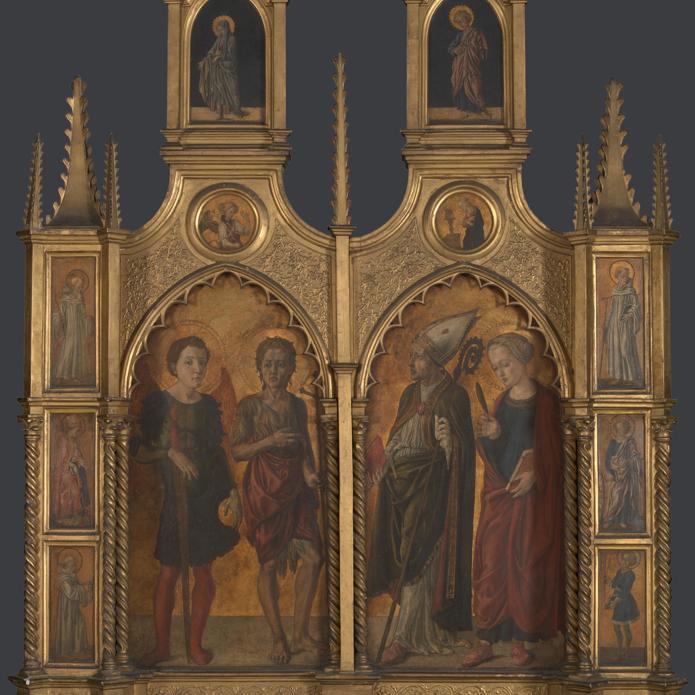
Overview
This altarpiece is a polyptych (a multi-panelled altarpiece) but parts of it are missing. The two halves were not originally next to each other, but were on either side of a painting of the Assumption of the Virgin formerly in the church of San Giovanni Evangelista, in Pratovecchio, Tuscany.
The whole altarpiece once stood on a side altar in the Camaldolese nunnery of San Giovanni. Very unusually we know quite a lot about its commissioning. In June 1400 one Michele di Antonio Vaggi, a Camaldolese monk, made a will asking his mother Johanna to found a chapel at San Giovanni, for which she was to provide a ‘tavola picta’ (a painted altarpiece).
Both Johanna and Michele’s patron saints appear in the main panels, with Camaldolese saints in the pinnacles. This is presumably the altarpiece made for their family chapel, although it wasn't painted until the 1450s.

